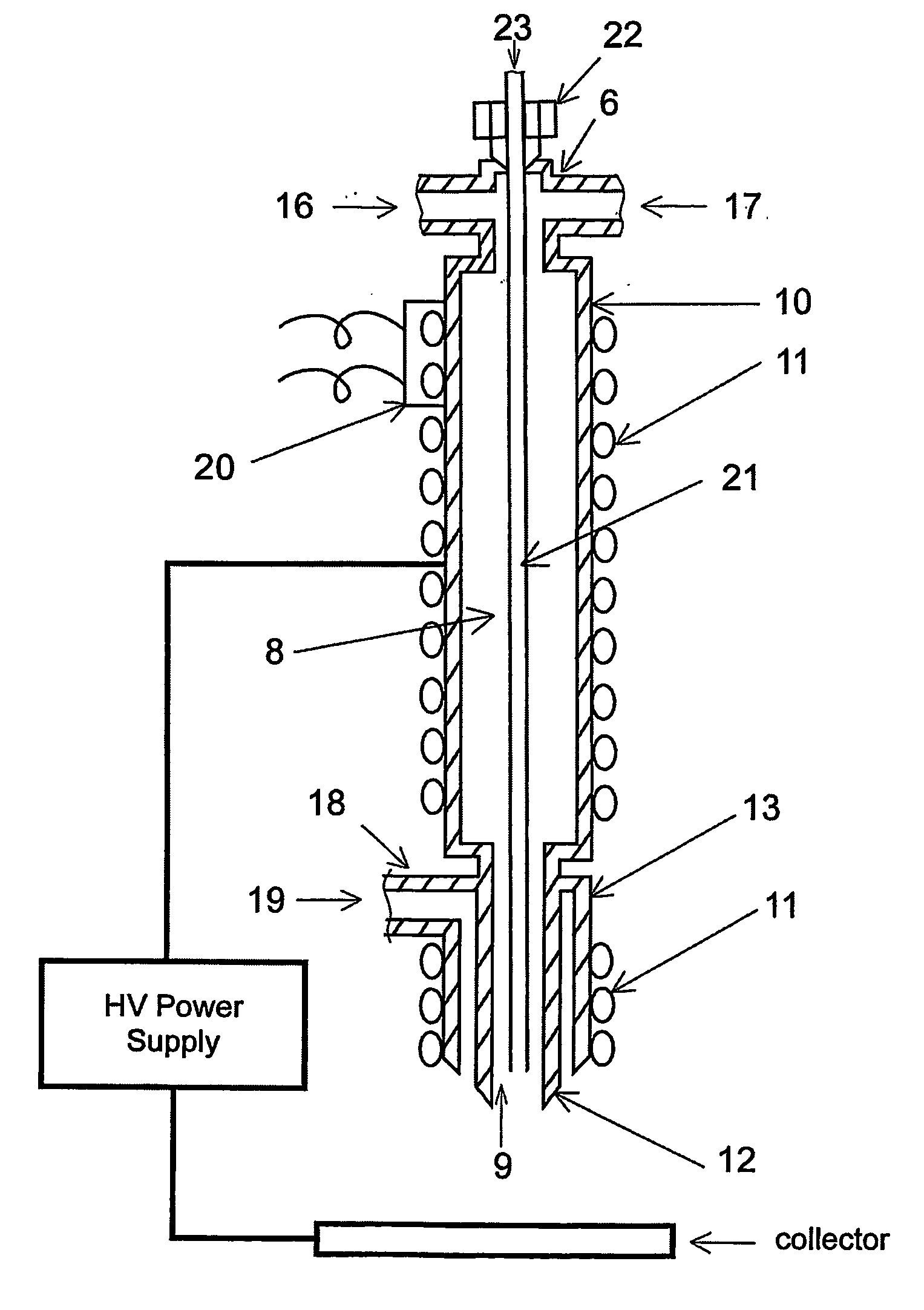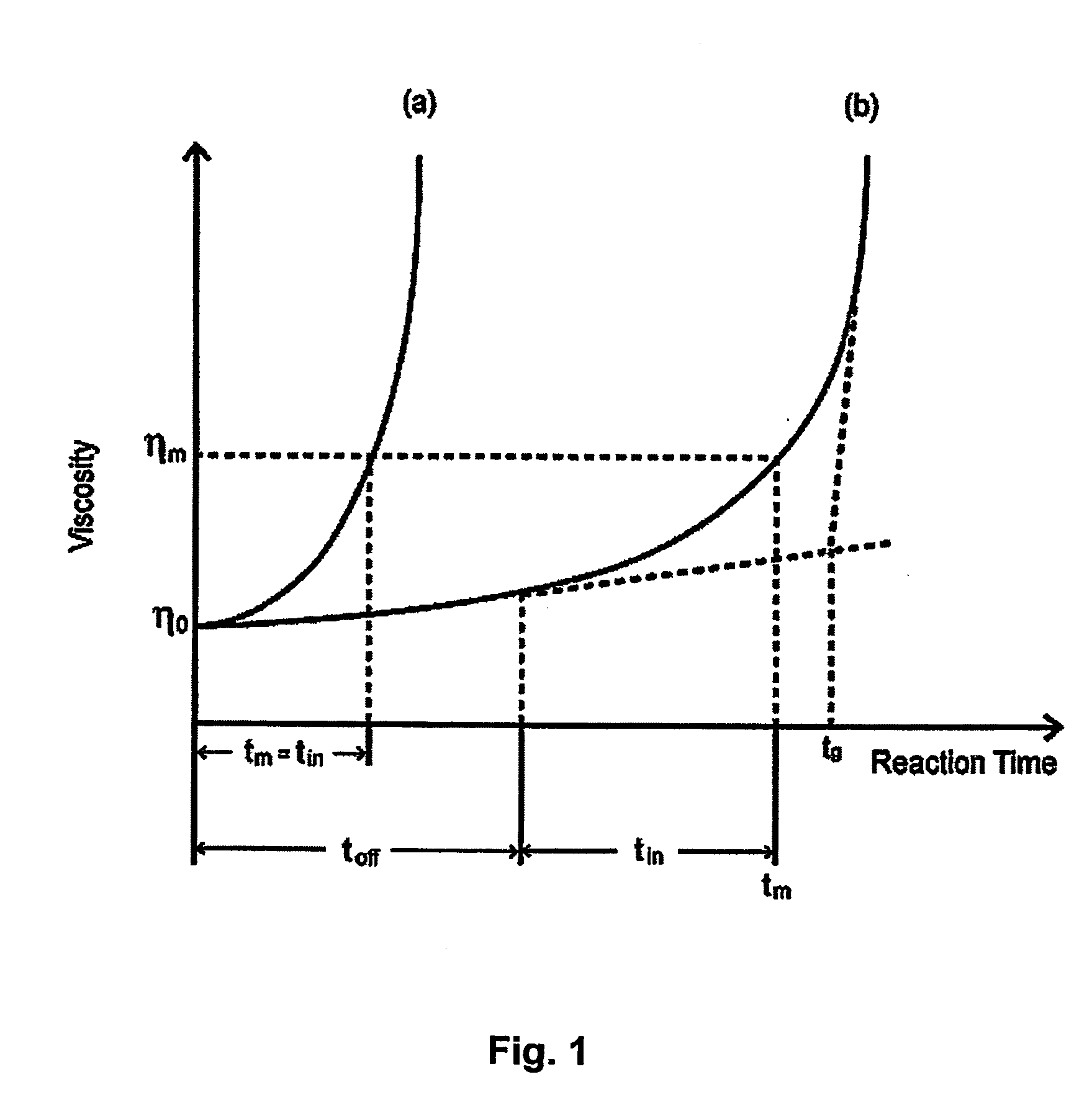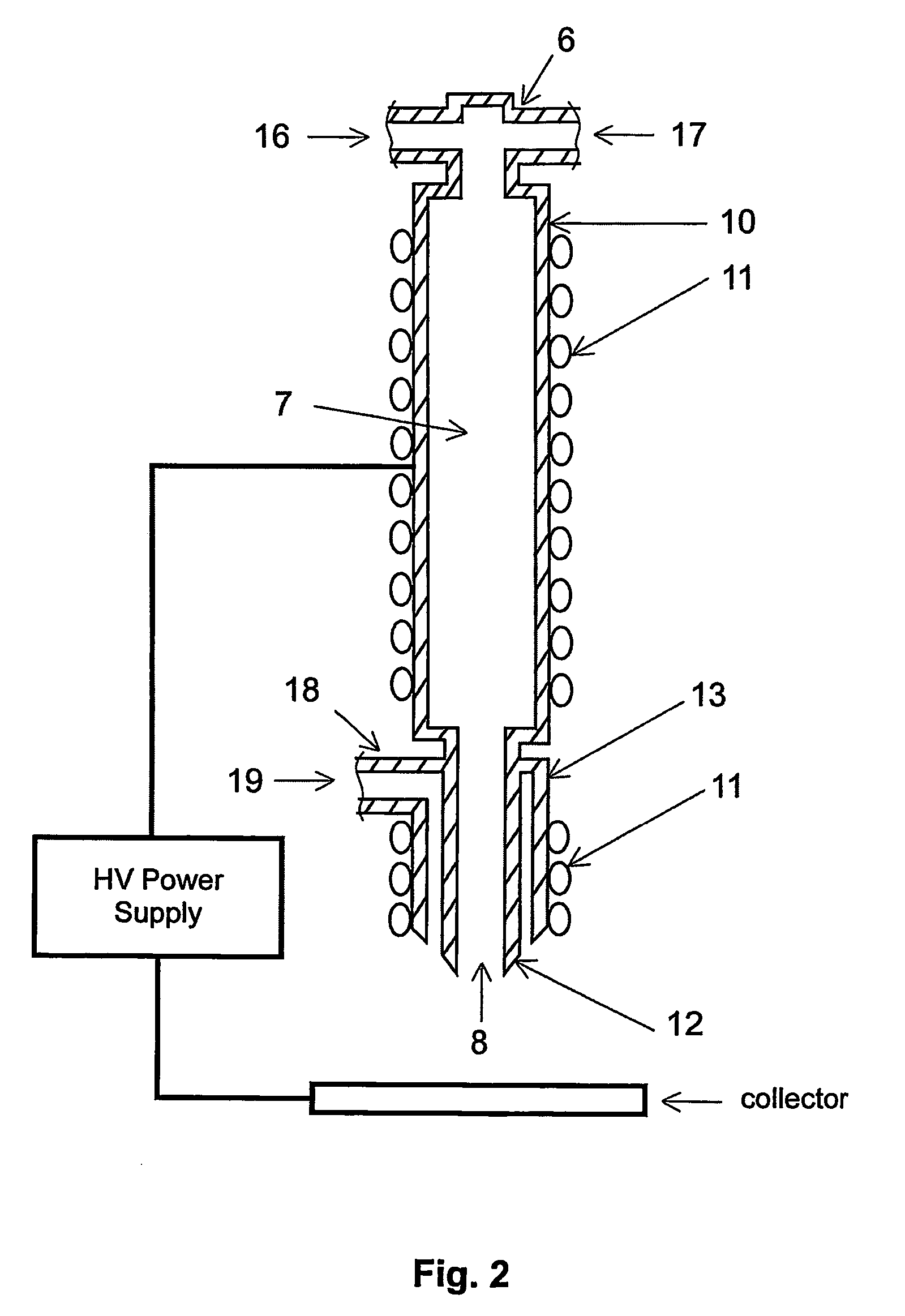Nanofibers, and apparatus and methods for fabricating nanofibers by reactive electrospinning
a technology of reactive electrospinning and nanofibers, which is applied in the field of nanofibers, can solve the problems of difficult fiber formation of highly crosslinked polymers and hyperbranched polymers, ineffective and costly traditional methods, and achieve the effect of expanding the application of electrospinning
- Summary
- Abstract
- Description
- Claims
- Application Information
AI Technical Summary
Benefits of technology
Problems solved by technology
Method used
Image
Examples
example 1
[0054]FIG. 2 depicts an embodiment of a reactive nozzle for chemical reactive electrospinning. It comprises an in-line mixer 6, an in-line chemical reactor 10, one or more coil heaters 11, an electrospinning capillary 12, and a sheath gas tube 13. The reactants are separately introduced though ports 16 and 17, and are mixed in mixer 6. The mixture 7 undergoes chemical reaction in the heated in-line reactor 10 and commences electrospinning at outlet 8 of capillary 12 with the assistance of sheath gas 19, which is introduced through port 18. The total in-line reaction time is
tin=(V1+V2+V3) / F (3)
or
tin=π(L1d12+L2d22+L3d32) / (4F) (4)
where tin is the total in-line reaction time (min.); V1, V2, and V3 are the volumes (ml) of the mixer, the reactor, and the capillary, respectively; L1, L2 and L3 are length (mm) of the mixer, the reactor, and the capillary, respectively; d1, d2, and d3 are the inner diameters (mm) of the mixer, the reactor, and the capillary, respectively; and F is the...
example 2
[0056] In another embodiment of the reactive nozzle, shown in FIG. 3, an ultrasonic transducer 20 is attached to mixer 6.
example 3
[0057] In another embodiment of a reactive nozzle (FIG. 4), a separate in-line mixer 6 with an ultrasonic transducer 20 attached is connected to the inlet port 15 of the reactor through a flexible tubing. This configuration allows the use of a high efficiency commercial mixer such as is commonly used in chromatography. Connecting the mixer 6 to the reactor 10 through flexible tubing can help reduce potential adverse effects of sonication on the electrospinning process, while maximizing its benefits. The flexible tubing makes it easier to control both processes. In such a case, the “L1” parameter should include the length of connecting tubing.
PUM
| Property | Measurement | Unit |
|---|---|---|
| diameter | aaaaa | aaaaa |
| diameter | aaaaa | aaaaa |
| diameter | aaaaa | aaaaa |
Abstract
Description
Claims
Application Information
 Login to View More
Login to View More - R&D
- Intellectual Property
- Life Sciences
- Materials
- Tech Scout
- Unparalleled Data Quality
- Higher Quality Content
- 60% Fewer Hallucinations
Browse by: Latest US Patents, China's latest patents, Technical Efficacy Thesaurus, Application Domain, Technology Topic, Popular Technical Reports.
© 2025 PatSnap. All rights reserved.Legal|Privacy policy|Modern Slavery Act Transparency Statement|Sitemap|About US| Contact US: help@patsnap.com



